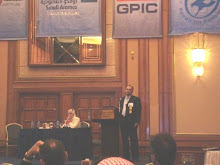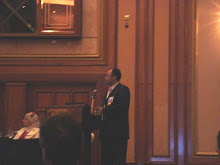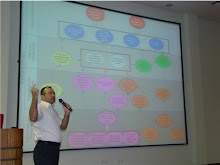1. Introduction
In this posting, I would like to present a perspective for Programme and Portfolio Management and their integration. Additionally, different sights are presented on how Programme and Portfolio Management can be used to enable cultural change, strategic implementation, and maturity development.
To end with, a comment on other posting and some thoughts that are open for discussions.
2. Portfolio and Programme Management
Project Portfolio is when we have different projects for the whole organization belonging to different business units, departments, divisions that serve the overall organizational strategy.
Alternatively, when we have many projects for many clients managed as a portfolio of multi-projects that share a common resource pool but have independent outputs (Turner J.& Keegan A., 2001)
Programme is when we have very close projects like sub-projects or phases; many projects for one client are managed as a program of projects. They will contribute together towards the larger end and serve a main objective of satisfying the client. (Turner J.& Keegan A., 2001)
Integration, would we like to look at the bigger picture and integrate both, we can say that: “Portfolio Management is a set of whole-of-organization processes designed to give a complete, end-to-end view of all the programs and projects an organization is running or plans to run.”(Knapp & Moore, 2003)

3. To facilitate cultural change
Among the hardest to manage is the culture that resides within the organization. How about when it comes to planning and implementing cultural changes?
In fact, cultural change programmes should always be a corner block in the organizational portfolio of projects; especially since cultural change is a very slow and continuous process.
4. A wheel for strategic implementation
To make sure that the high level ‘mission statement’ is the umbrella that all projects reside under.
In order to overcome strategic implementation difficulties arising at corporate, business and operational levels, we use programme management as the strategic implementation “wheel” underpinned by relevant skills and established learning; not relying on projects with inappropriate systems/processes; which is a common mistake leading to diffused, diluted, compromised or postponed strategic implementation (Kippenberger, 2000)
An approach that I find really interesting and challenging is when a separate temporary structure can be created by developing integrated programmes of projects (Partington,2000) thus strategic change will be managed outside existing culture in a way to integrate projects and business as usual (Murray-Webster et al, 2000).
5. Portfolio for maturity development
Since closing many gaps in performance needs to be achieved before we can realize the maturity benefits, and since maturity gaps in specific areas would most probably affect outcomes from other areas that may be mature enough; Porgrammes of projects become effective means to ensure that the benefits realized exceed the sum of individual project benefits
6. Feedback on other Postings
I like the term presented that Portfolio Management is a ‘dialogue between business management of the organization and the implementation management …”. Although I would like to stop quoting here to maintain a loose end. Then think of how many dialogues can the organization have through portfolio management. Business? Strategic? Cultural development? Cultural alignment? Business and IT alignment? Competency development? Technical development? Alliance? Maturity development? Exploring new markets? Middle Managers’ Feedbacks?
I am not sure about the cost disadvantage of Portfolio and Programme Management. In this aspect, I would like to differentiate between performing the previously mentioned and establishing a PMO.
In matrix Organizations, Portfolio and Programme management provide high ROI once a PMO is established. PMOs will provide the infrastructure of centralized information (projects performance, future forecasts and strategic alignment, IT infrastructure and expertise ) that would enable easier and cost effective implementing of Portfolio/Programme Management…
If I was to look for some disadvantages of Portfolio/Programme Management, how about suggesting that they somehow promote the top-down approach, obstruct creativity among middle managers, and sometimes hinder organizational flexibility to explore and grab ‘opportunities’. However, these disadvantages can be minimized by feedback loops and by pushing strategic decision making lower into the hierarchy.
Regards
Samer
About The Author

- Eng. Samer el Barakeh, MPM, PMP
- Samer el Barakeh was born in Lebanon, 1973. He completed his Bachelor in Engineering-CCE at Beirut Arab University-Lebanon in 1996 with honours. Samer was granted Masters Degree in Project Management (MPM) from the University of Sydney-Australia with honours. He also gained the Project Management Professional (PMP) Credential from The Project Management Institute (PMI). Samer is a member of the Order of Architects and Engineers in Lebanon since 1996, The Project Management Institute (PMI), Arabian Gulf Chapter (AGC-PMI) and Lebanon Chapter-PMI. During his 13 years of professional experience in Lebanon, Australia and Saudi Arabia, Samer held many positions among them: Telecommunication Site Engineer, Site Manager, Low Current Service Head, and he is currently Senior Systems Analyst at the General Project Construction Division. Samer is a Project Management Consultant and Training Provider for universal organizations like Business Management Consultants (USA) www.bmc-online.com and PMCTQuest (Canada) www.pmctquest.com Samer is a Registered Training Provider for Project Management Professional (PMP), and he provides training in Program Management, Portfolio Management,PMO...
Select a topic to view content
- A comparison between PMBOK and Prince2 Methodologies and reflection on case study examples (1)
- ABC to Avoid Project Failure (1)
- Business Case and Quantitative Benefits (1)
- Do we need more 'Planners' ? (1)
- Fasilitator in Partnering-A Coincise Shot (1)
- How to Ensure Stratgic Alignment of Our Projects? (1)
- Individual Dissimilarity and Team Work (1)
- Knowledge Management (1)
- Maturity Models-The Pros and Cons (1)
- Organizational Advantages from Partnering (1)
- Organizational Maturity: Lets Head Upwards... (1)
- Organizational Strategy and Project Alignement (1)
- Practical Solutions 1 of 6: Introduce RMMM (1)
- Practical Solutions 2 of 6: Facilitate Change to Perk up Maturity (1)
- Practical Solutions 3 of 6: Leverage Organisational Culture Barrier (1)
- Practical Solutions 4 of 6: Organisational Cultural Alignment (1)
- Practical Solutions 5 of 6: Defining a Unified Decision Making Tool (1)
- Practical Solutions 6 of 6: Understanding The Paradox of Control (1)
- Programme Management to Implement Strategy (1)
- Project Management and Construction Management (1)
- Project Managers relocated before Proper Project Closure and Learning Lessons (1)
- Project Managers' Power (1)
- Strategic Planning (1)
- Successful Project Management Office-PMO (1)
- System Thinking: Archetypes at Work... (1)
- The Partnering Change Process (1)
- The Upper Hand… Leadership skills or Processes? (1)
- Thinking about change needed? Maybe you should be more ‘worried’ about how to make it real (1)
- Vision Mission and Objectives What and Why? (1)
- What is meant by Portfolio and Programme Management (1)
- Why Partnering in Organizations? (1)
April 2, 2008
Portfolio and Programme Management
Posted by
Eng. Samer el Barakeh, MPM, PMP
at
8:08 PM
0
comments
![]()
![]()
Subscribe to:
Comments (Atom)
Followers
All Titles
A comparison between PMBOK and Prince2 Methodologies and reflection on case study examples
ABC to Avoid Project Failure
Business Case and Quantitative Benefits
Do we need more 'Planners' ?
Fasilitator in Partnering-A Coincise Shot
How to Ensure Stratgic Alignment of Our Projects?
Individual Dissimilarity and Team Work
Knowledge Management
Maturity Models-The Pros and Cons
Organizational Advantages from Partnering
Organizational Maturity: Lets Head Upwards...
Organizational Strategy and Project Alignement
Practical Solutions 1 of 6: Introduce RMMM
Practical Solutions 2 of 6: Facilitate Change to Perk up Maturity
Practical Solutions 3 of 6: Leverage Organisational Culture Barrier
Practical Solutions 4 of 6: Organisational Cultural Alignment
Practical Solutions 5 of 6: Defining a Unified Decision Making Tool
Practical Solutions 6 of 6: Understanding The Paradox of Control
Programme Management to Implement Strategy
Project Management and Construction Management
Project Managers relocated before Proper Project Closure and Learning Lessons
Project Managers' Power
Strategic Planning
Successful Project Management Office-PMO
System Thinking: Archetypes at Work...
The Partnering Change Process
The Upper Hand… Leadership skills or Processes?
Thinking about change needed? Maybe you should be more ‘worried’ about how to make it real
Vision Mission and Objectives What and Why?
What is meant by Portfolio and Programme Management
Why Partnering in Organizations?















